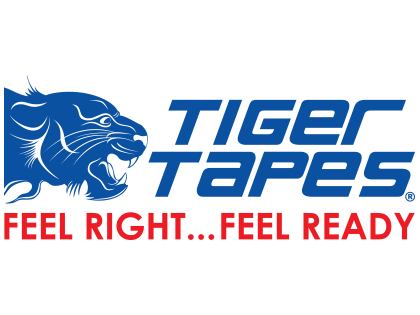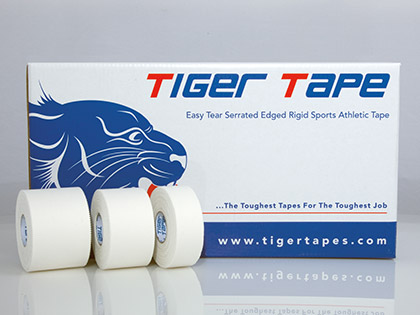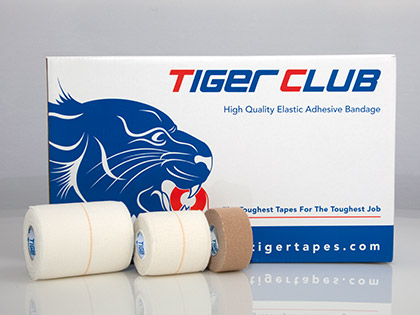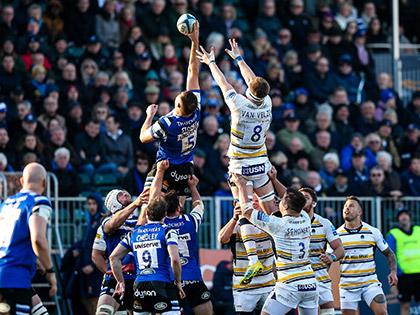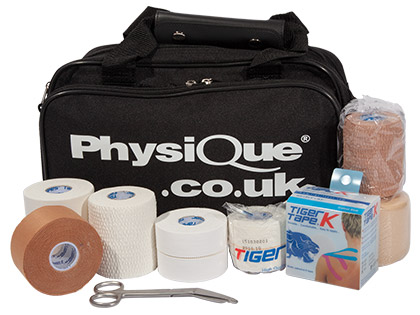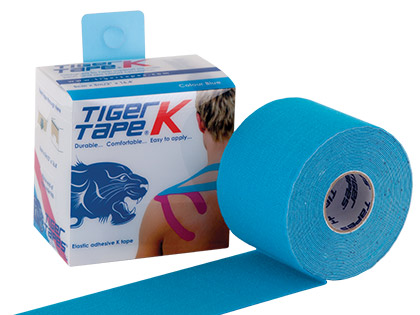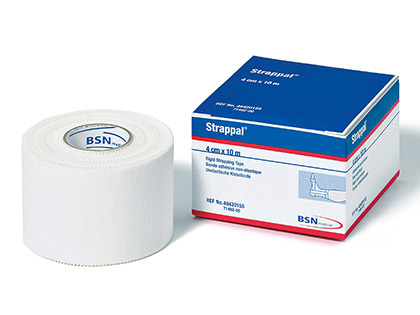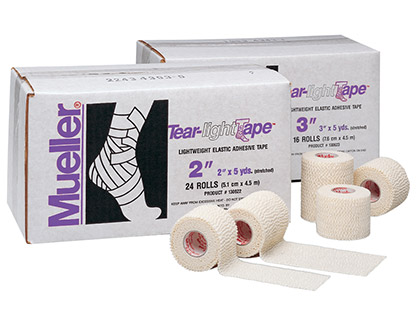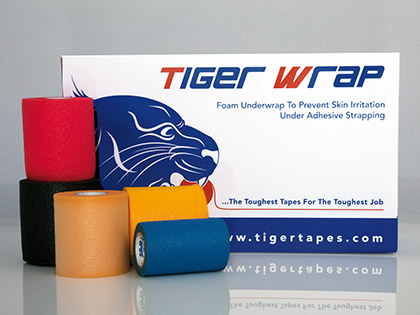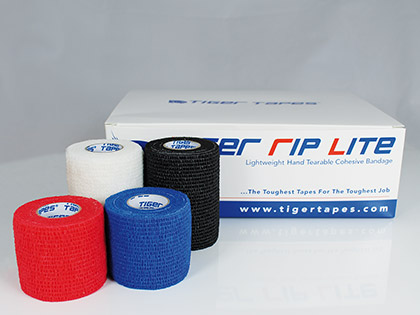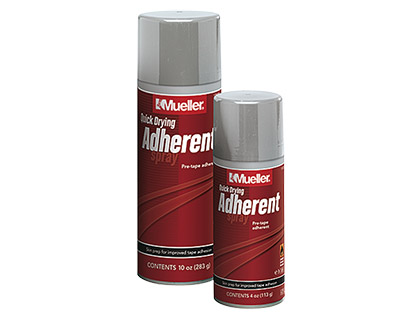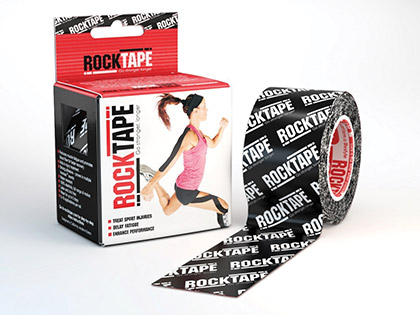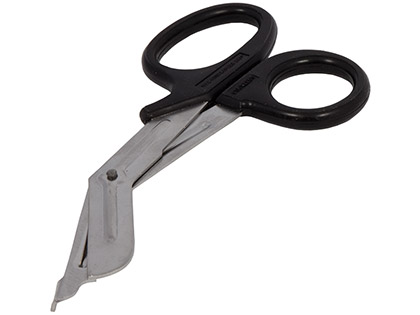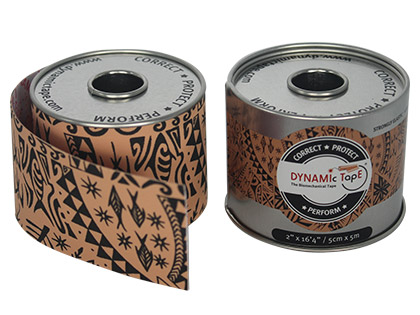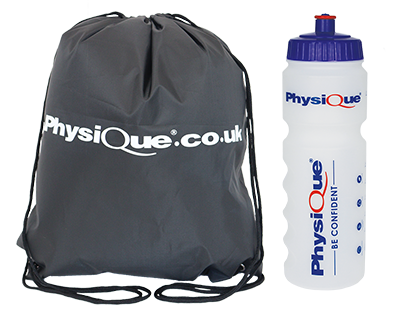Taping & Strapping
Our Taping & Strapping Range
We have years of experience in providing you with the best sports tapes.
As suppliers and providers to teams and associations at all levels you can be confident our tapes will meet any demand. Strong, durable and effective.
Our passion and proficiency for taping and strapping have grown after dedicated research along with feedback from our customers, to develop the ultimate range of sports tapes to give you the best results.
In this section, you’ll find superior sports tapes from leading providers, including Tiger Tapes, BSN, Mueller, Cramer, RockTape and many more.
We’ve covered everything you could need for all types of taping techniques, so you can provide the right treatment for injuries.
Taping and Strapping FAQs
Taping and strapping is the process of using tape or adhesive bandages to stabilise and fasten an injured joint or sprain. You can tape and strap an injury to help protect the joint from the initial damage, further damage or help speed up recovery. Kinesiology Tape is the colourful tape strips that you see on various professional athletes and can be used for pain relief and injury management of joints and muscles.
Take a look at our Taping and Strapping Buyer's guide for a more structured explanation on how to pick the right tape or take a look at our taping videos which give you step-by-step guidance on how you can use various tapes for a range of Taping and Strapping techniques.
N.B. The following information is not meant to be in any way prescriptive and is merely content that has been compiled to help you make an informed decision about which product could suit you. Please remember to contact your physician or sports health professional for proper, qualified guidance.
Does taping joints work?
Using strapping on your joints gives the joint mechanical support which is effective at preventing injuries and re-injury. The taping or strapping technique will also restrict your joint’s range of motion which will help prevent common injuries sprains and strains and stop your joint from ending up in unnatural positions.
Kinesiology tape can be used before and after an activity or session for pain management and faster recovery.
What is the purpose of strapping?
The objective of strapping any part of the body is to provide support for an existing injury or it can be used as a contingency to prevent injury.
Strapping a joint with athletic tape restricts movement while providing support for tendons, ligaments, and muscles. Strapping with athletic tape will also provide support to the joint or muscle as well as other benefits.
Is athletic tape the same as Kinesiology Tape?
Athletic Tape and Kinesiology Tape are distinctly different, athletic tape is distinguishable by its plain white colour and Kinesiology Tape has a range of colours but typically comes in bright colours. Athletic tape and EABs are used when the aim is to restrict movement, it is thick and usually tightly wrapped.
Therefore, the compression restricts blood flow. Kinesiology tape on the other hand aims to maintain a normal range of motion so it is used less as a preventative measure and more as a treatment. Athletic Tape is also known as Zinc Oxide Tape and Strapping Bandages.
Is Kinesiology Tape bad for you?
Although Kinesiology Tape has numerous benefits which can be used to prevent or treat common muscle and joint injuries, you should not use Kinesiology Tape if you are allergic to adhesives, have an open wound, have been diagnosed with a Deep Vein Thrombosis (DPV) and have an infection or active cancer.
What does sports tape actually do?
Kinesiology Tape, although a controversial topic amongst sports therapists, offers various benefits such as pain relief by increasing blood flow and lymphatic drainage to specific areas. It can prevent cramps and reduce swelling. Sports tape or Kinesiology tape is also effective for facilitating proper muscle contractions and increasing mobility.
How long can I leave Kinesiology Tape on?
Kinesiology tape, unlike other tapes, is water-resistant so you can leave it on and not worry about taking it off immediately (even for showers). It is strong enough that you may be able to use the same tape application for three to five days without irritating the skin but it is advisable that you remove it if you have any feelings of discomfort.
Do I need to shave before applying Kinesiology Tape?
It is not necessary for you to shave the skin before applying Kinesiology Tape. In fact, short hairs can actually help the tape stick to the skin better by providing more traction which will make the tape more effective and more likely to create the desired effect of restricting blood flow and lymphatic drainage.
Is Zinc Oxide tape the same as athletic tape?
Yes, Zinc Oxide tapes are also commonly known as athletic tapes.
What is athletic tape used for?
Traditional athletic tape is used for limiting the range of motion because it is quite thick and is used alongside EAB strapping.
They are wrapped tightly around the joints and can help the body heal faster than if the movement was not restricted. It can also serve as a splint for sprained joints, which provides effective support and helps speed up recovery as well.
How long can you leave athletic tape and EAB on?
Athletic tape should only be applied briefly before the joints and muscles are used such as before or after warm-up and removed immediately after the activity.
This will limit the amount of pressure put on the joint and the tape will therefore help prevent re-injury in the case of an existing injury or prevent injuries by limiting the range of motion of the joint.
Is pre-wrap the same as athletic tape?
Athletic Pre wrap is used under athletic tape to help eliminate skin irritation caused by repeated taping. It is also used to secure cold packs and bandages.
What does prophylactic taping mean?
Prophylactic taping is a preventive technique used for the protection, stabilisation, and care of athletic injuries.
This taping technique is used to prevent injuries by giving the necessary joints extra support and protection. You should never use this technique as an alternative to strengthening exercises, it should be used as a temporary taping solution to support a joint.
What tape is used for Rugby Lineouts?
Easily tearable Elastic Adhesive Bandages or Strapping Bandages are tightly wrapped around a rugby lifting block on the lower part of the thigh. The lock is typically lifted up by the strongest member of the team which is the prop so the lifting block gives the prop something to hold on to while the strapping secures the block to the lock's leg.
Take a look at our Rugby Lineout Tape section for more information.
Guides
With help from experts in their professions, we have written the following related guides:
